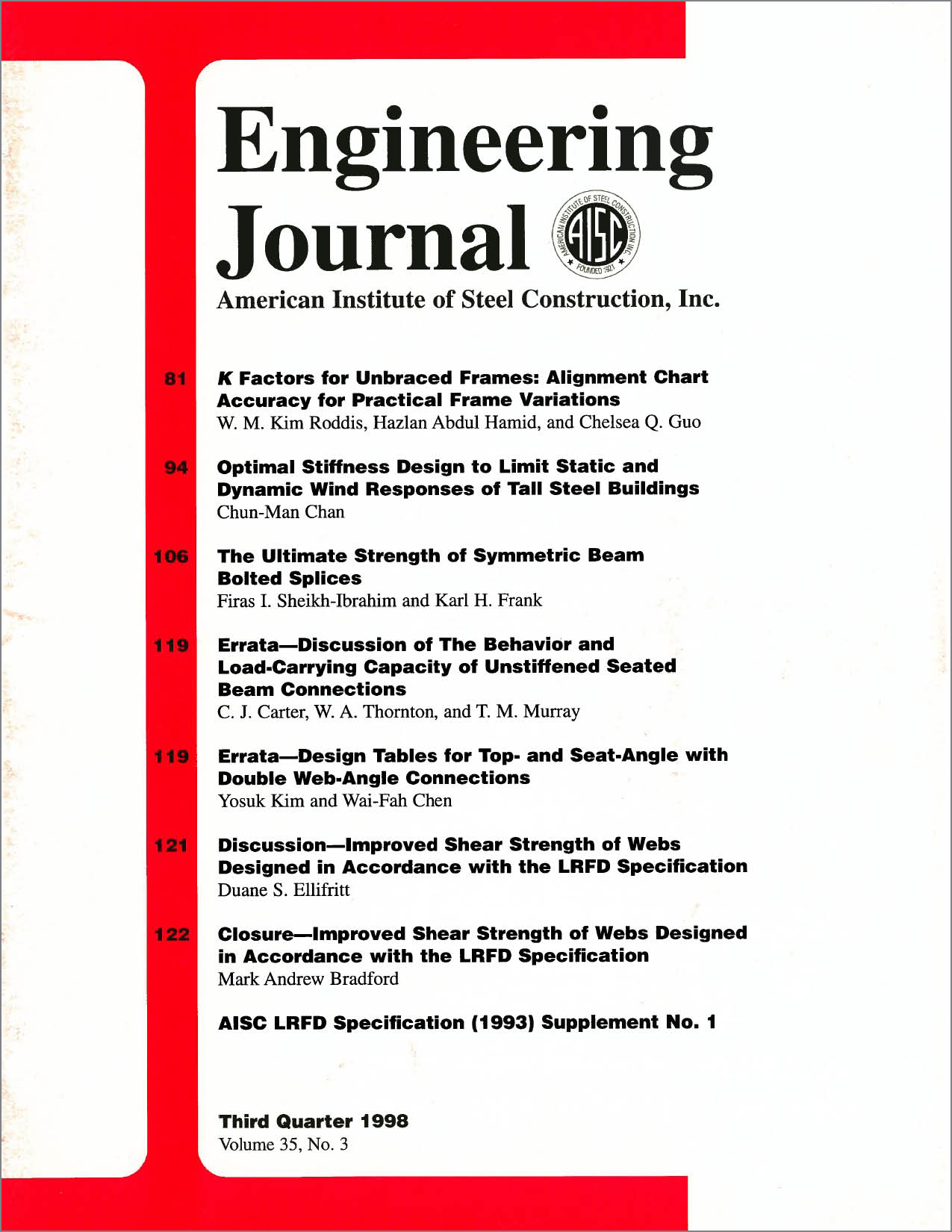K-factors for Unbraced Frames: Alignment Chart Accuracy for Practical Frame Variations
DOI:
https://doi.org/10.62913/engj.v35i3.704Abstract
For design of steel columns in unbraced frames, the current AISC specification commentaries from both LRFD and ASD contain an alignment chart to determine the K factor for a particular column. The K factor is based on the effective length concept where K factors are used to equate the strength of a compression member of length L to an equivalent pinended member of length KL subjected to axial load only. The unbraced frame alignment chart is a graphical representation in nomograph form of a transcendental equation of a buckling solution of a subassemblage. This solution involves several assumptions not necessarily satisfied in a particular practical situation. The goals of this paper are to point out the practical limitations of the unbraced frame alignment chart effective length approach and to encourage the use of story-based effective length factors. This is done in the following manner. A parametric study shows the limits of accuracy and applicability of the unbraced frame alignment chart results from a linear buckling analysis. The benefits of the AISC Commentary equation C-C2-5 story-based effective length factor are shown through comparison to the alignment chart and linear buckling analysis results. The parametric study shows sufficient examples to encourage practitioners to use story-based techniques for stability assessment. The parametric study investigates variations in bay width, column moment of inertia, loading, and column height. All nomograph results reported include correction of girder factors to account for unequal girder end moments with noncenterspan inflection point. The alignment chart performance is relatively insensitive to bay width variation. Variations in column moment of inertia and column loading lead to large inaccuracies in the alignment chart K factor values but C-C2-5 better handles these cases. The alignment chart performance is most sensitive to column height variation. Configurations with large variation in column height require frame stability analysis to obtain accurate K factors.

